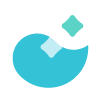Catchup – An app for people living in different timezones to schedule their availability and tell the time differences effortlessly at glance.
Users can add different timezones, tell the time differences and pick a suited schedule to match with family, friends or someone to Catchup with.
In this project, my research includes discovering and defining common challenges for people from different time zones who want to connect with one another. A potential solution was developed based on user interviews and studies, affinity mapping, creation of a persona, userflow, testing and iterations of the prototype.
Process

Pain Points
- Calculating the time differences.
- Aligned availability for all people involved.
“It’s tricky to do group conversations over multiple timezones, I Google the timezones.” – Health care worker, UK.
Common Experiences
- Pick a date and/or time.
- Convert time differences (Mind, Google, clock app, internet search).
- Confirm with all people involved (Text message, voice message, call conversation, social media and email).
- Otherwise repeat steps 1 and 3.
- If a change of plan occurs, plan is rescheduled or canceled.
- Repeat steps 1 to 3.
“I calculate the time difference in my head and use mobile to communicate back and forth to arrange for a schedule.” – Graduate, Australia.
“I check for both mine and their schedule, I use calendar plus alarm as a reminder.” – Australian living abroad, China.
Defining the problem
How Might We
How Might We…
- Help users eliminate manual calculation of time difference?
- Filter out unavailable schedules to reduce the effort of learning of each others availability?
- Reduce repetition in users steps to organise a schedule?
Affinity Mapping

Developing Ideas
- Time differences being easy to identify visually.
- Safe times to schedule a get-together. Safe times may include wake times or during parts of the day, outside of commitments such as work and family.
- Comparing schedules.
Feature prioritisation

Initial key screen

Userflow

First Prototype

Results and findings
- Not understanding ‘Last Question’ screen which resulted in pressing “Later” button.
- The top part of the screen mislead user to think it was showing the weather.
- A questionable “M” and “W” without clarity in what the letters stand for.

Iteration

Sitemap


Second prototype
- How well did users understand all content and information displayed?
- Is the User Interface clear and layout intuitive? Is this easy to pick up?
- An additional screen was introduced to block out time as a filter for key screen.

Results and Findings
UI Design on Sketch

Usability test questions
- Demonstrate how you will add your friends timezone.
- Set/highlight your free times of the week.
- How would you go about comparing your time difference to a friend from another city?
- How would you organise a group catchup?
- How would you go about comparing equivalent time zones with multiple friends?
- Show me how you would change the settings of your current default time zone?
- Share your schedule to your friends.
Possible solution
Effortless scheduling
When users shared their step by step methods to organising a schedule. There was common pattern of repetition of choosing a date and time, confirming with the other person and repeat until both sides can agree. A possible solution was for users to preallocate their free time in advance, then share their availabilities to people involved to minimise repetition and back and forth communication.
InVision prototype


See it all at glance
Time difference is one of the main factors taken into consideration when organising for a call session. Interviewed participants calculate by mind, search the internet or use a world time clock. By having time difference displayed all in one place, this can reduce the effort of working out different timezones and reduce repetitive steps. The example below shows different timezones can be added and compared with local timezone.
Share intuitively
‘Catchup’ needs to be intuitive and cater to mobile users wanting to communicate with people living abroad. The criteria for UI needs to be visually clean with only necessary buttons for clarity. There should be visual feedback from a button press, subtle animation from gestures during a left or right screen pan and when moving into different sitemap hierarchies. The prototype below shows the instance of sharing a schedule. The sharing schedule function only appears when the criteria logic is met – only when a free time block is already highlighted.
Usability Test
- Initial prompts to setting timezone and highlighting free schedule was consistently easy to understand.
- Dashboard may need visual/gestural feedback to show updated times and reflect the app design. Some participants had pause for a moment to understand what feedback was given as they screen panned left and right.
- The options under Settings initially had confusing names where users weren’t clear what the setting options meant. This has now been addressed and updated after feedback.
Plus/Delta columns

Try the prototype
Click below to interact with the prototype:

